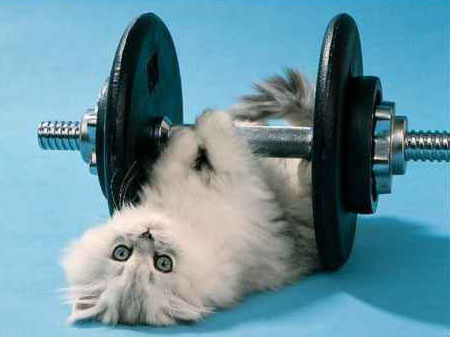We are always looking for a breakthrough in bodybuilding to force our bodies to build even more muscle mass. Consequently, we tend to push ourselves to our limits in the hopes that every bit of strain will result in progress. Well, this debilitating idea must be tossed out. The fact is that the more you push and strain yourself, the higher the risk for injury and the greater the need for rest and recuperation. If you constantly train to the brink of your capacity, you inevitably hurt your central nervous system (CNS) which effects your strength. Thus your progress starts to slow, you start to feel physically weak, and the weight which you could previously lift without any problems, now becomes an impossible task.
So what's the rememdy? How can we prevent this plateau in gains and strength. I pondered this over and took a look at prevailing training ideas. I realized that muscles like variety. Just like individuals, muscles get bored of the same training protocol; and a bored muscle will not respond to any old stimulation. Thus doing set after set is not the best way to go. In addition, periodization is not enough because, again, your not giving your muscles any thrill of being stimulated since they are so used to the protocol. So what you need is a way to challenge your muscles in every workout and give it a reason to grow. More importantly, you need to give a variety of stimulation to activate hypertrophy. So rather than using the same weight and doing set after set, or going from light weights to heavy in a linear fashion, let's vary the weights!
This is where my Wave Theory comes in. Wave theory takes the principle of volume training and periodized training and adds to it a certain variety to help stimulate the muscle and always leave it guessing.
Example:
Conventional programs often begin like this
1x15
1x12
1x10
1x8
etc
or
10x10 (same weight)
Wave Theory
1x10 (ex. 100 lbs)
1x8 (ex. 110 lbs)
1x6 (ex. 120 lbs)
1x8 (ex. 115 lbs
1x10 (ex. 110 lbs)
1x8 (ex. 120 lbs)
1x6 (ex. 130 lbs)
1x8 (ex. 130 lbs)
1x10 (ex. 120 lbs)
And that's the basic idea! As you can see, you have incorporated both periodized training and volume but you also add in an element of variation in the weights. Rather than just staying with one weight or going from low to high, you are going low to high, then high to low, then low to high! This way, your muscle will be confused and thus respond even better to the next weight load because it doesn't know what to expect. Even with the lower weight, the intensity still increases because the rep ranges are different. This here folks is the perfect system to beat plateaus and emphasize hypertrophy.
Do you need to do all those sets? No. Depending on how many exercises you plan to do for a body part, you could do a single wave (10,8,6,8,10) especially for smaller body parts.
Just as an individual gets bored from monotony and routine, so do muscles when it comes to training. You can strain, you can grunt, you can curse etc. But if you do something that bores the muscle, then it will never grow. Therefore, you must shock the muscle by leaving it guessing as to what punishment will it have to endure next. Give this program a try and see the amazing results.
Muscle: "Don't bore me bro!"


No comments:
Post a Comment